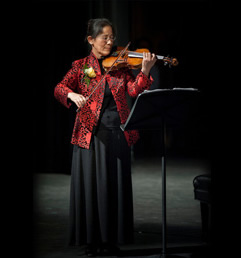Although my duties for CVNC had taken me to Winston-Salem on several previous occasions, this fine program was my introduction both to the Winston-Salem Symphony and its beautiful home, the Stevens Center. Downtown Winston-Salem was surprisingly busy for a Sunday afternoon, and the auditorium of the Stevens Center, a beautifully restored cinema palace from 1929, was well-filled for Robert Moody’s program. Opening was the familiar Symphony in C of Igor Stravinsky, a neo-classic work written for the 50th anniversary of the Chicago Symphony Orchestra in 1940 (it is interesting to note that Stravinsky wrote the Symphony of Psalms for the 50th anniversary of the Boston Symphony Orchestra ten years earlier). As circumstances got worse in the world outside, music had to consciously go in the other direction, with a somewhat artificial smile – compare, for example, the moods of the works produced by Copland in the 30’s with those from the 40’s.
As one might expect from a work in C, this is a bright, even cheerful, work, clear, Parisian, in the sort of ironic style that recalls Poulenc (17 years Stravinsky’s junior), and written for a classical-size orchestra, with the exception of the addition of three trombones and tuba. The first oboe (here played excellently well by John Hammarback) gets a real workout, carrying the opening theme in the first movement, and with a substantial role in the second movement as well. The winds more general had a chance to shine in the difficult polyphonic imitation at the close of the third movement – masterfully done. The fourth movement is the only place where the darkness that must have been on everyone’s minds in 1940 is evident, with deep dissonances from the bassoons and trombones, and for that matter, the only material where one might recognize the Stravinsky of the Rite of Spring. Moody and band put across this challenging (even if accessible) music convincingly.
Completing the first half was a radically different work, the Bassoon Concerto K. 191 of Mozart, with Saxton Rose, a member of the WSS, as soloist. This is an early work (1774), relatively uncomplicated (the strings are only joined by pairs of oboes and horns), and it lives and dies in the hands of the soloist. Alas, Rose did not seem at his ease, and the first movement included two rather significant lapses (of memory?) on his part, as well as betraying a tendency to rush ahead. The lyrical slow movement allowed Rose to show off his compelling qualities as a soloist – an attractive and flexible tone, and an impressive command of dynamics (although in general his sound was overbalanced by the large body of strings). Perhaps a contemporary work for bassoon might show him to better advantage.
After intermission Moody led a well-inflected and assertive (can I say masculine?) reading of the Mozart Symphony No. 39 in E-flat, with the incisive strings turning on a dime at Moody’s bidding. The winds were placed on risers well up-stage – too far up-stage to my ears, so that they were considerably softer than the strings, rather than being equal partners in the musical conversation. That being said, the work was beautifully done, and well-received by the listeners.











